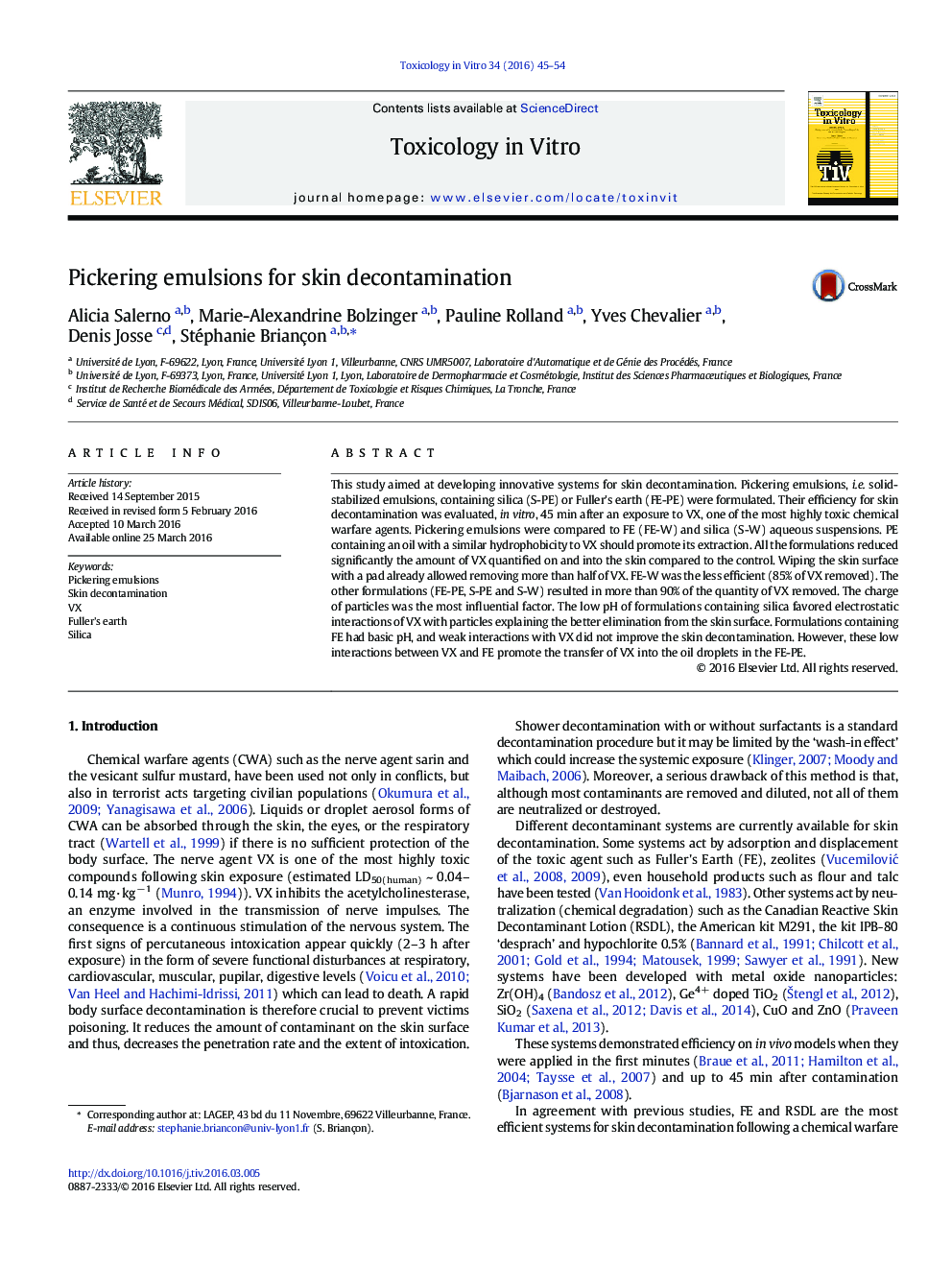| Article ID | Journal | Published Year | Pages | File Type |
|---|---|---|---|---|
| 5861070 | Toxicology in Vitro | 2016 | 10 Pages |
â¢Use of silica particles for skin decontamination favored the electrostatic interaction with VX over FE.â¢Pickering emulsion and suspension containing silica had the same decontamination efficiency against VX.â¢A Pickering emulsion of FE improved VX decontamination over FE in suspension.
This study aimed at developing innovative systems for skin decontamination. Pickering emulsions, i.e. solid-stabilized emulsions, containing silica (S-PE) or Fuller's earth (FE-PE) were formulated. Their efficiency for skin decontamination was evaluated, in vitro, 45Â min after an exposure to VX, one of the most highly toxic chemical warfare agents. Pickering emulsions were compared to FE (FE-W) and silica (S-W) aqueous suspensions. PE containing an oil with a similar hydrophobicity to VX should promote its extraction. All the formulations reduced significantly the amount of VX quantified on and into the skin compared to the control. Wiping the skin surface with a pad already allowed removing more than half of VX. FE-W was the less efficient (85% of VX removed). The other formulations (FE-PE, S-PE and S-W) resulted in more than 90% of the quantity of VX removed. The charge of particles was the most influential factor. The low pH of formulations containing silica favored electrostatic interactions of VX with particles explaining the better elimination from the skin surface. Formulations containing FE had basic pH, and weak interactions with VX did not improve the skin decontamination. However, these low interactions between VX and FE promote the transfer of VX into the oil droplets in the FE-PE.
Graphical abstractDownload high-res image (191KB)Download full-size image
